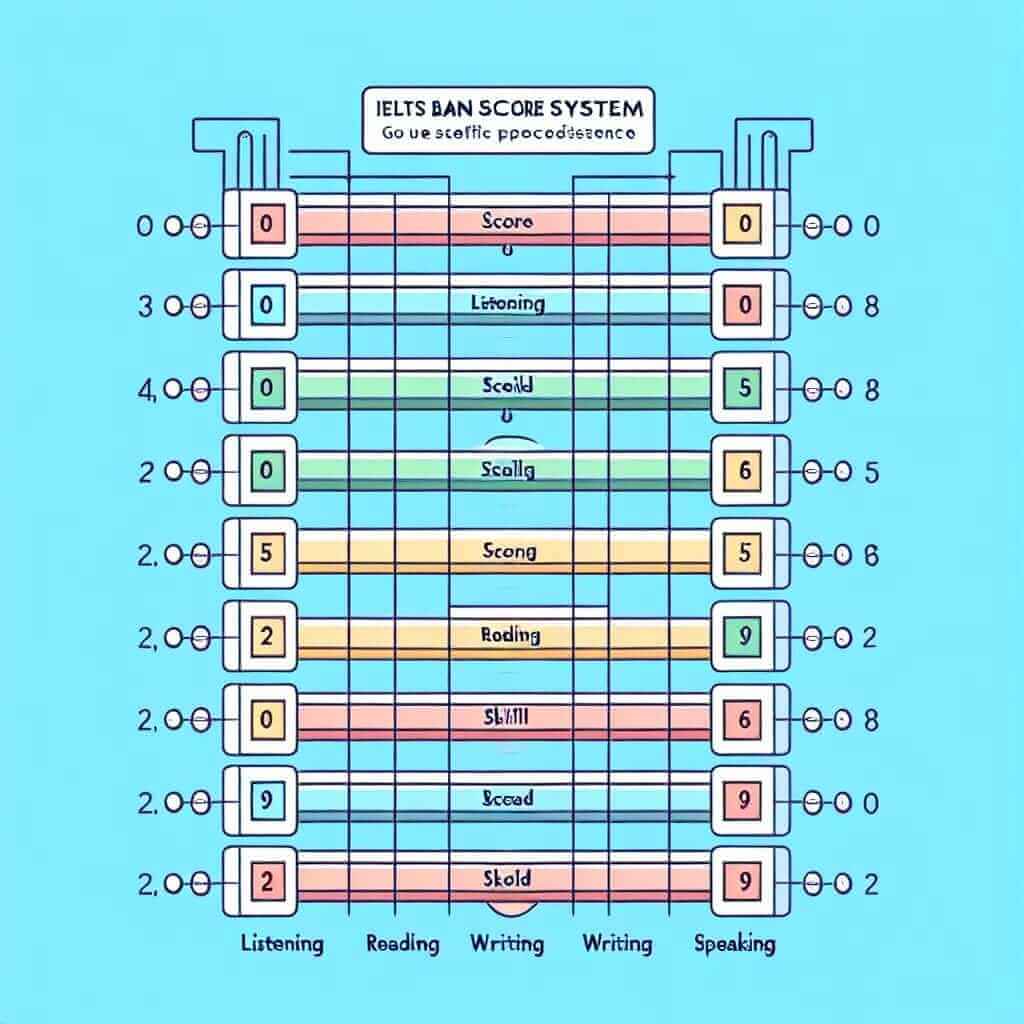The International English Language Testing System (IELTS) is a globally recognized English proficiency test that opens doors to academic and professional opportunities. Whether you’re aiming for higher education abroad or career advancement, achieving your desired IELTS score is crucial. As an IELTS instructor with over two decades of experience, I’ve witnessed firsthand the challenges and triumphs students encounter in their IELTS journey. This comprehensive guide will delve into proven strategies and insights to help you navigate the intricacies of the IELTS and attain your target score.
Understanding the IELTS Band Descriptors
Before delving into test-taking strategies, it’s essential to understand how the IELTS is scored. The test assesses your abilities in four modules: Listening, Reading, Writing, and Speaking, each graded on a band scale of 0-9. Your overall band score is the average of these four modules.
The key to success lies in comprehending the IELTS band descriptors, which outline the specific criteria examiners use for each band level. These descriptors encompass various aspects of language proficiency, including:
- Fluency and Coherence: Your ability to speak and write smoothly, logically, and with clear connections between ideas.
- Lexical Resource: The range and accuracy of your vocabulary.
- Grammatical Range and Accuracy: Your ability to use a variety of grammatical structures correctly.
- Pronunciation: Your ability to be understood clearly when speaking.
Effective Strategies for Each IELTS Section
Listening
- Predictive Listening: Before each recording begins, utilize the given time to preview the questions and anticipate potential answers based on keywords and context.
- Active Listening: Focus intently on the recording, paying close attention to details, dates, numbers, and any changes in speaker intonation.
- Keyword Recognition: Identify and underline keywords in both the questions and answer choices. This will help you stay focused and locate relevant information within the audio.
Reading
- Skimming and Scanning: Skim the passage quickly to grasp the main idea, then scan for specific information related to the questions.
- Understanding Question Types: Familiarize yourself with different question types, such as multiple choice, sentence completion, and True/False/Not Given.
- Paraphrasing: Be prepared to identify synonyms and paraphrased information in the passage to answer questions correctly.
Writing
- Task Analysis: Analyze the task requirements carefully, paying attention to the type of essay, word count, and specific instructions.
- Planning and Structure: Before writing, brainstorm ideas and create a clear outline to organize your thoughts logically.
- Supporting Evidence: Support your ideas with relevant examples and details. Avoid making general statements without substantiation.
Speaking
- Fluency over Perfection: Aim for smooth and natural speech, even if you make minor grammatical errors. Don’t let the pursuit of perfect grammar hinder your fluency.
- Vocabulary Range: Use a variety of vocabulary to demonstrate your language proficiency. However, prioritize accuracy over using complex words incorrectly.
- Idea Development: Expand on your answers with reasons, examples, and details. Avoid giving short, one-sentence responses.
Sample IELTS Question Analysis
Let’s illustrate these strategies with a sample IELTS Writing Task 2 question:
“Some people believe that the government should invest more money in public transportation, while others think that private car use should be encouraged. Discuss both views and give your own opinion.”
Breakdown:
- Keywords: government investment, public transportation, private car use, discuss both views, opinion.
- Task: Discuss both sides of the argument and provide a balanced opinion.
Possible Approach:
- Introduction: Briefly introduce the topic and state your thesis statement.
- Body Paragraph 1: Discuss the benefits of government investment in public transportation (e.g., reduced traffic congestion, environmental benefits).
- Body Paragraph 2: Discuss the advantages of encouraging private car use (e.g., convenience, personal freedom).
- Conclusion: Summarize both sides and reiterate your balanced opinion.

Tips for Success
- Practice Regularly: Consistent practice is key. Utilize official IELTS practice materials and simulate test conditions to build familiarity and confidence.
- Seek Feedback: Have a qualified IELTS instructor or language partner review your writing and speaking to identify areas for improvement.
- Time Management: Practice time management strategies for each section to ensure you can complete the test within the allocated time.
Conclusion
Achieving your desired IELTS score requires a combination of effective strategies, consistent practice, and a thorough understanding of the test format and scoring criteria. By embracing the insights and techniques outlined in this guide, you can approach your IELTS preparation with confidence and increase your chances of success. Remember, the journey to IELTS success is a marathon, not a sprint, so be patient, persistent, and embrace the learning process.